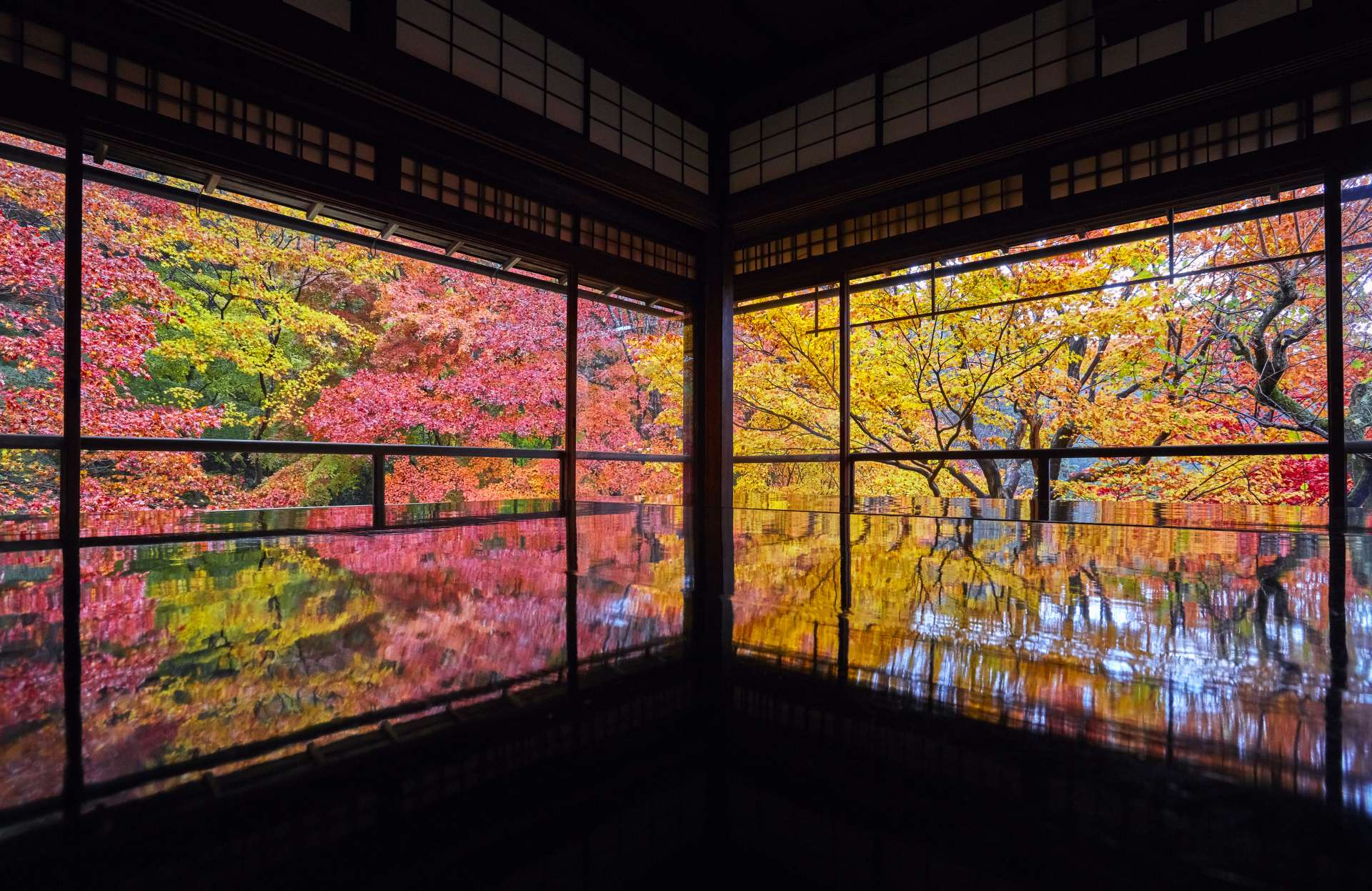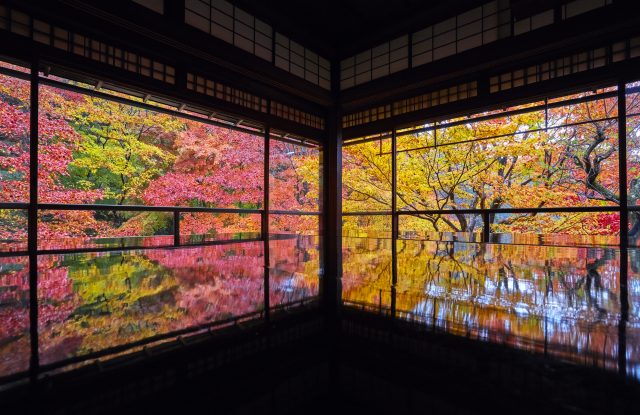Verified
[Verified] denotes information that has been published with confirmation of its owing parties.
Rurikoin
This temple is only open to the public twice a year, in the spring and autumn, and visitors can enjoy the spectacular view of nature.
This temple, located in Yase Ohara, has been loved by aristocrats and warriors since the Heian period. It is usually closed to the public, but is only open twice a year for special viewings in spring and autumn. The temple precincts are planted with over a hundred different species of maple trees, making it one of the best spots in Kyoto to see autumn foliage. You don’t want to miss the entire area turning crimson. The green maple leaves in spring are also worth seeing.
It was originally the hermitage of Sanjo Sanetomi, an imperial court noble in the Meiji period. From the end of the Taisho period to the beginning of the Showa period, a major renovation was carried out, and a total of 800 square meters of Sukiya-style buildings and three gardens with natural scenery were created on a site of approximately 40,000 square meters. Each of the three gardens has a different character; the main garden “Ruri-no-niwa”, which represents the world of the Pure Land in lapis lazuli color; the “Yamaroji-no-niwa”, which is covered with deep green moss; and the “Garyo-no-niwa”, which is a pond garden with water and stones representing a dragon ascending to heaven.
The view of “Ruri-no-niwa” from the “Shoin (Drawing room)” is particularly popular, and from the second floor, the view of fresh greenery in spring and autumn leaves is breathtaking. The reflection of the maple leaves on the table creates a fantastic atmosphere and gives visitors the illusion that they are surrounded by maple leaves. The reflection on the polished lacquered corridor called “Yuka-momiji (maple leaves on the floor)” is also a must-see.
The “Yase-no-kama-buro”, a prototype of the Japanese-style steam bath, is also worth seeing. There is an anecdote that Emperor Tenmu used this bath to treat his back injury caused by a stray arrow during the Jinshin War in 672. The temple also houses many treasures, such as the Amida Sanzon Raigo-zu (Amida triad) painting from the Muromachi period and the folding screens of flowers and plants from the Edo period. These treasures are on display during special viewings, and are worth seeing along with the buildings and gardens.
Highlights
-
It is only open to the public twice a year for special viewings.
-
One of Kyoto’s best autumn foliage spots, and the green maple leaves in spring are also beautiful.
-
The view of the Ruri-no-niwa garden from the Shoin is especially appealing.
-
The reflection of the maple leaves on the table and floor creates a fantastic atmosphere.
-
The Kama-buro, the prototype of a Japanese-style steam bath, is a must-see.





